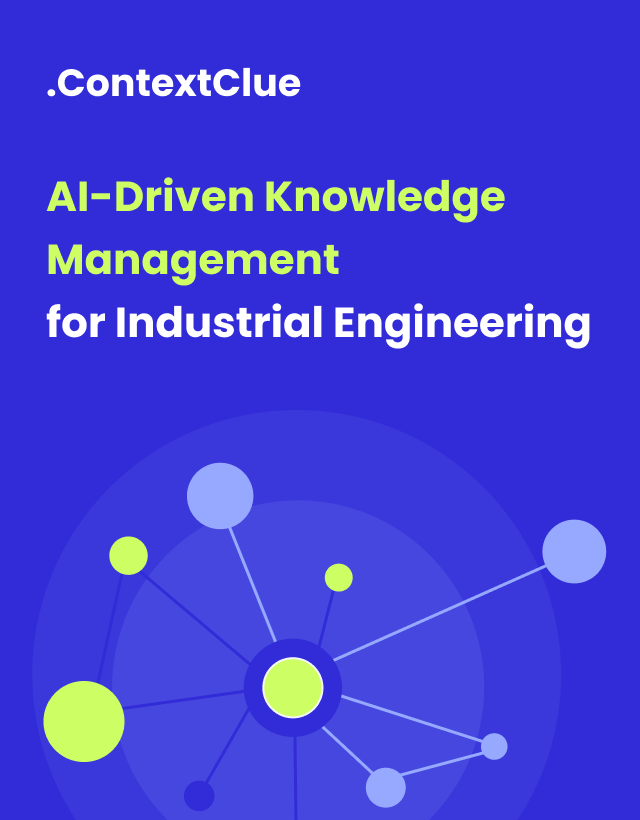Prompt engineering is the skill of writing instructions that guide AI models to give better results. As models like GPT-3 and GPT-4 became more powerful, the way you phrase a prompt often matters more than retraining the AI itself.

in Blog
June 02, 2025
What Is Prompt Engineering?
Author:

Artur Haponik
CEO & Co-Founder
Reading time:
6 minutes
Prompt engineering is the systematic discipline of designing, optimizing, and standardizing natural language instructions that guide large language models to produce consistent, accurate, and business-relevant outputs for enterprise applications.
Unlike casual interactions with AI chatbots, professional prompt engineering requires understanding both the AI model’s capabilities and the nuances of natural language to maximize effectiveness and reliability in business contexts.
Large Language Models and Prompt Engineering
The development of prompt engineering is strictly related to the evolution of Large Language Models (LLMs) themselves.
Early language models like GPT-1 (2018) with 117 million parameters required explicit fine-tuning for specific tasks.
However, the breakthrough came with GPT-3 (2020) and its 175 billion parameters, which demonstrated that sufficiently large models could perform diverse tasks through carefully crafted prompts alone, without additional training.
This paradigm shift from task-specific fine-tuning to prompt-based adaptation fundamentally changed how organizations approach AI implementation.
The emergence of models like GPT-4, Claude, PaLM, and LLaMA created an ecosystem where the quality of prompts became the primary determinant of AI system performance, making prompt engineering essential for extracting maximum value from these powerful but complex systems.
The transformer architecture underlying modern LLMs introduced attention mechanisms that could process context differently based on how information is presented, making prompt structure and formatting crucial for optimal performance.
This architectural reality transformed prompt writing from an art into a systematic engineering discipline requiring deep understanding of how these models process and respond to different instruction patterns.
Prompt engineering in Modern AI Systems
Prompt engineering serves as the foundation for creating autonomous systems that can handle complex workflows while maintaining compliance with business policies and regulatory requirements.
When organizations implement AI-powered solutions, well-engineered prompts enable AI agents to navigate nuanced business scenarios, make appropriate decisions within defined parameters, and escalate complex situations to human oversight when necessary.
The discipline extends beyond technical prompt crafting to include understanding business context, domain expertise, and operational requirements.
Effective prompt engineering enables organizations to achieve deterministic outcomes from probabilistic AI models through carefully constructed instructions that incorporate regulatory compliance, quality controls, and strategic business objectives.
This systematic approach transforms AI from an unpredictable tool into a reliable business asset, bridging the gap between cutting-edge technology and practical enterprise applications.
The Model-Specific Considerations
Different LLM families exhibit distinct characteristics that influence prompt engineering strategies.
- GPT models (OpenAI) respond well to structured, role-based prompts and demonstrate strong few-shot learning capabilities.
- Claude models (Anthropic) excel with conversational, context-rich prompts and show particular strength in reasoning tasks.
- PaLM and Gemini (Google) perform optimally with task-decomposition approaches and structured output formats.
Understanding these model-specific behaviors enables organizations to optimize their prompt strategies for their chosen AI platforms.
Cross-model compatibility is crucial for enterprises deploying multiple AI systems, requiring prompt engineering frameworks that can adapt to different model architectures while maintaining consistent performance standards.
Token Economics and Efficiency
Different LLMs use varying tokenization approaches, affecting both cost and performance. Prompt engineers must understand how their target models process text to optimize for both effectiveness and efficiency.
Well-engineered prompts often achieve better results with fewer tokens, directly impacting operational costs in production deployments.
Advanced Techniques for Prompt Engineering
1. Chain-of-Thought Reasoning
This technique enables AI systems to handle complex business logic by explicitly structuring reasoning processes that mirror human decision-making patterns.
Chain-of-thought prompting proves particularly valuable for financial analysis, risk assessment, and strategic planning applications where stakeholders need visibility into AI reasoning processes for audit and compliance purposes.
The approach breaks down complex questions into smaller, logical steps, helping models solve problems through intermediate reasoning rather than direct answers.
This enhances transparency and provides audit trails crucial for enterprise applications, especially in regulated industries.
2. Meta-Prompting
Organizations implement meta-prompting strategies that create higher-level instruction frameworks capable of generating specialized prompts for different business contexts.
This approach enables scaling prompt engineering efforts by creating intelligent systems that adapt their communication patterns based on situational requirements and business objectives.
Meta-prompting involves designing prompts that generate other prompts, creating hierarchical systems where high-level business requirements automatically translate into specific, contextual instructions for different AI components.
This technique proves essential for large-scale enterprise deployments with diverse use cases.
3. Retrieval-Augmented Generation Integration
This advanced approach integrates enterprise knowledge bases, documentation, and real-time data sources into prompt construction.
Retrieval-augmented prompting enables AI systems to provide responses grounded in current business information and organizational knowledge, bridging the gap between general AI capabilities and specific enterprise requirements.
The technique dynamically incorporates relevant business context into AI interactions, ensuring responses remain current and accurate while leveraging the full scope of organizational knowledge assets.
Prompt Architecture
Professional prompt engineering requires systematic frameworks built from core components that work together effectively.
These frameworks include:
- Role Assignment: Defining the AI’s function and persona in specific business scenarios
- Context Injection: Providing relevant background information and business context
- Task Clarity: Precise instruction specification with clear success criteria
- Output Structure: Defined formatting requirements and response templates
- Guardrails: Safety measures, compliance controls, and quality constraints
These components function like modules in software development, enabling organizations to create reusable prompt frameworks that incorporate business logic, compliance requirements, and quality controls while allowing customization for specific use cases.
Conclusion
Prompt engineering has evolved into a fundamental discipline for LLM customization and designing enterprise-grade AI applications.
By establishing systematic approaches to prompt development, testing, and deployment, organizations unlock the full potential of AI systems while maintaining the reliability, compliance, and performance standards required for mission-critical business applications.
The strategic value lies not merely in improving individual AI interactions, but in creating foundational infrastructure that enables AI systems to operate effectively within complex business environments.
Through proper framework development, systematic testing protocols, and integration with modern operational practices, prompt engineering provides the bridge between cutting-edge AI capabilities and practical business value.
As AI continues to transform industries and business processes, prompt engineering will remain a critical competency for organizations seeking to leverage artificial intelligence as a strategic advantage rather than merely a technological novelty.
Organizations that master this discipline will be better positioned to realize the full transformative potential of AI while maintaining the operational excellence demanded by modern enterprise environments.
Category:
AI Agents
Generative AI






